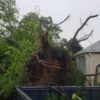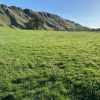Commentary
Most property in Napier sell in the middle to upper middle price range relative to general Hawkes Bay residential values. The Napier market has been consistent with the overall trends seen across Hawkes Bay, as described below.
From late 2021 we started to see some softening of the Hawkes Bay Residential property market, following a period of unpresented growth following the impacts of Covid-19.
We are seeing a strong rise in the number of properties on the market, with property taking significantly longer to sell. Market values across the board have reduced from their peak in late 2021, with the decline perhaps most notable in the lower and middle price ranges. Previously multiple offers were almost guaranteed, while this is now becoming uncommon. Feedback from market participants is increasingly pessimistic.
From July 2021, interest rates started to rise off record lows, with most of the increase having occurred since October 2021. This has been coupled with the Credit Contracts and Consumer Finance Act (CCCFA) which came into effect on 1 December 2021, resulting in banks turning down a lot of lending applications where there could be questions around the affordability of the loan. This change has been particularly hard felt in the lower price bracket (particularly first home buyers).
That said, residential market value levels remain above pre-covid levels, and this market softening, must be understood in the context of market conditions in the years preceding. In 2020 and 2021, the initial fears of a market collapse caused by the effects of Covid-19 were quickly discarded as purchasers took advantage of looser monetary policy including low interest rates to invest in the property market. Competition ensued between purchasers, aided in part by population growth driven by immigration to Hawkes Bay (both domestic and international) which helped Hawkes Bay exceed the National average population growth since 2019. Attempts by the government to cool the housing market, including removing tax deductibility from interest payments and extending the Brightline Test to ten years were initially insufficient to control value increases.
A shortage of block land serviced and available for subdivision had led to a shortage of sections, with some subdivisions being sold off plans immediately upon release to the market. Recent months have seen that trend end, with subdivisions now typically taking some time to sell down. Buyers now feel confident market conditions are now in their favour. Building consents in Hawkes Bay are currently almost twice normal levels than those over the past decade (a rate exceeding most regional areas of New Zealand). Building costs are continuing to rise with all trades now operating at or beyond capacity, causing labour and materials costs to rise, with transport costs exacerbating the issue. Additional cost pressure is strong from rising costs, resulting in an overall large inflationary impact of building costs.
We expect to see more slow market conditions in Hawkes Bay for the rest of 2022. If borrowing interest costs continue to rise as forecast, there is a probability of further reductions in market values.





